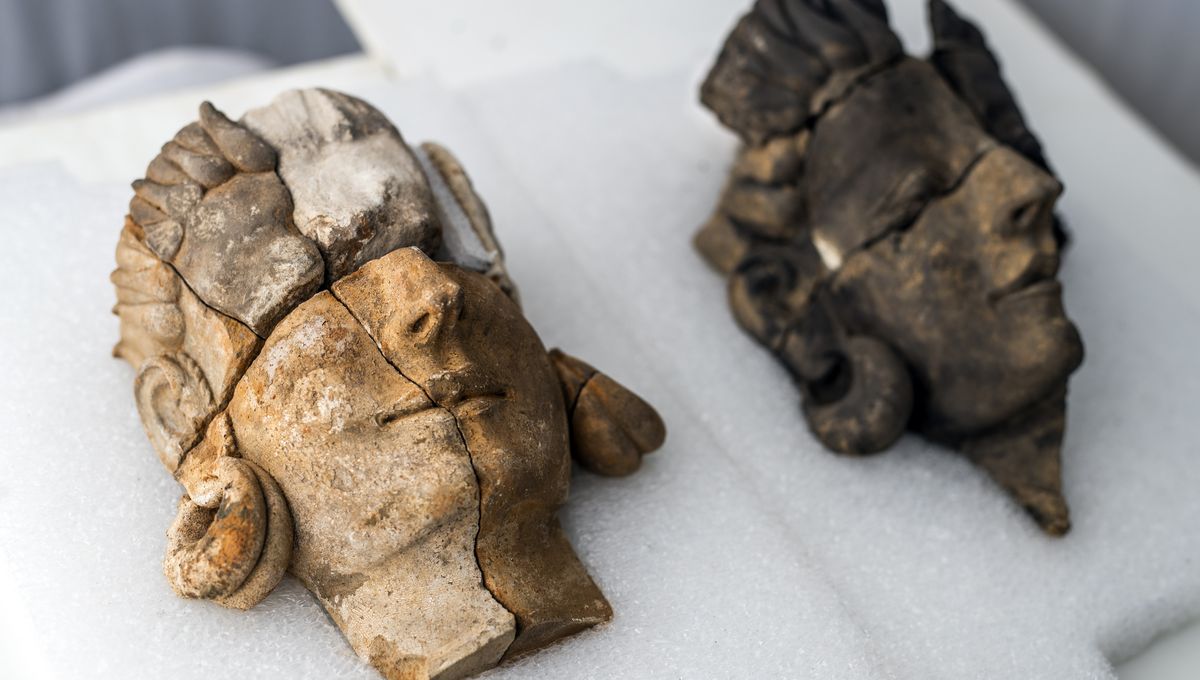
An archaeological excavation in Badajoz, southwest Spain, has rewritten what we know about pre-Roman Iberian culture. With the discovery of five stone busts dating from the fifth century BCE, the previously accepted narrative on the local Tartessian culture has been turned on its head – showing clearly that the ancient inhabitants of the area were a sophisticated civilization rivaling those of Greece and Etruria.
The Tartessians have long been a mysterious civilization: generally thought of as one of the earliest in Western Europe, their culture is known today mainly from references by Greek and Roman writers. Like so many historical records from back then, these need to be taken with a grain of salt: descriptions of the people’s incredible wealth and prowess veer into the semi-mythical, with some more fanciful theories placing it as the site of Atlantis.
Physical evidence for the civilization, however, has proven scant: we know, for instance, that they had a proper writing system, but the entire Tartessian-language bibliography consists of fewer than 100 inscriptions and graffitos. As for sculptures and statues – well, they’ve so far been thought of as non-existent, with the only examples discovered in the area being small bronzes out of Phoenicia.
With the new discoveries, however, this idea has been shattered – along with the generally accepted theory that the Tartessians were not a distinct and civilized culture in their own right. “This breaks the paradigm that the Tartessian was an aniconic culture, that is, one that had no figurative or anthropomorphic representation,” Sebastián Celestino, a researcher at the Institute of Archaeology of Mérida and co-director of the project, told El País.
“Whether it was an artisan from elsewhere or someone born in the area who mastered the techniques, it seems clear that they were sculpted here,” he explained. “[And that] says a lot about the level of sophistication of those who commissioned something like this.”
Almost life-size, the statues aren’t only changing the way historians think of the culture as a whole – they’re also already filling in some of the details of Tartessian life. Take the two busts which are wearing earrings, for example: “These types of earrings have been found at other sites of the era and region, so they are very well-documented,” Esther Rodríguez, the site’s other co-director, told El País, “but now we finally know how they were worn: the chain was used to attach it to the ear.”
Another bust shows a young warrior, with hair in a braid – a symbol of transition into adulthood that was common in early Iberia. Perhaps, the researchers have suggested, this young warrior is a character in a story described by the statues – maybe protected by earring-adorned goddesses – all forming what was once a single narrative relief.
Found during the excavation of the Casas de Turuñuelo archaeological site – a huge, 2,500-year-old two-story building described as “unique” in the Western Mediterranean – the five busts were discovered together in a single room. Based on the artifacts found within, as well as the construction and organization of the chamber, the researchers suggest this room may have acted as an economic and political center for the local area.
That said, they caution that the busts may well have been moved to the location, rather than having always been there. Like other buildings in the area, the building the statues were found in was intentionally destroyed some 2,500 years ago – burned, buried, and abandoned after a huge feast and massive public sacrifice of more than 50 animals.
But while the busts certainly bear the scars of this destruction, their survival may be owed, ironically, to exactly that violence. Whoever it was that saw fit to destroy the buildings and statues also chose to bury the evidence under a layer of clay – clay which, the researchers say, acted as a protective layer against erosion from soil and the elements.
While there’s a chance we’ve not seen the true extent of the culture’s art and sculptural legacy – it’s impossible to say how much was lost in whatever upheaval led to their destruction – the discovery of these five busts has nevertheless changed the way the Tartessian culture is set to be viewed. Far from the unsophisticated civilization free from human representations of any kind, this ancient Iberian people may soon enjoy a reputation as a culture as highly sophisticated and artistic as any of their time.
Source Link: Five Statues Discovered In Spain Just Upended Everything We Know About Ancient Life